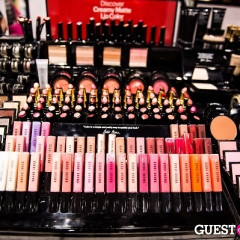 Living in such an image-obsessed enclave of the world, I'm pretty fascinated by photography and its stranglehold on our media culture. In that vein, I give you CSI:Fashion Edition. In 5 Ways to Spot a Fake Photo, Scientific American lets us indulge our inner forensic nerd with doctored-up pictures from political protest shots to American Idol cheesecake. Telltale signs as minuscule as the pools of light reflecting from a person's eyeball are enough to reveal its unauthenticity. Seem frivolous? Not when you consider what's at stake...
Living in such an image-obsessed enclave of the world, I'm pretty fascinated by photography and its stranglehold on our media culture. In that vein, I give you CSI:Fashion Edition. In 5 Ways to Spot a Fake Photo, Scientific American lets us indulge our inner forensic nerd with doctored-up pictures from political protest shots to American Idol cheesecake. Telltale signs as minuscule as the pools of light reflecting from a person's eyeball are enough to reveal its unauthenticity. Seem frivolous? Not when you consider what's at stake...
"The validity of an image can determine whether or not someone goes to prison and whether a claimed scientific discovery is a revolutionary advance or a craven deception that will leave a dark stain on the entire field. Fake images can sway elections, as is thought to have happened with the electoral defeat of Senator Millard E. Tydings in 1950, after a doctored picture was released showing him talking with Earl Browder, the leader of the American Communist Party.
Political ads in recent years have seen a startling number of doctored photographs, such as a faux newspaper clipping distributed on the Internet in early 2004 that purported to show John Kerry on stage with Jane Fonda at a 1970s Vietnam War protest. More than ever before, it is important to know when seeing can be believing."
Happy snapping!


.jpg)
.jpg)



.jpg)
.jpg)
.jpg)



